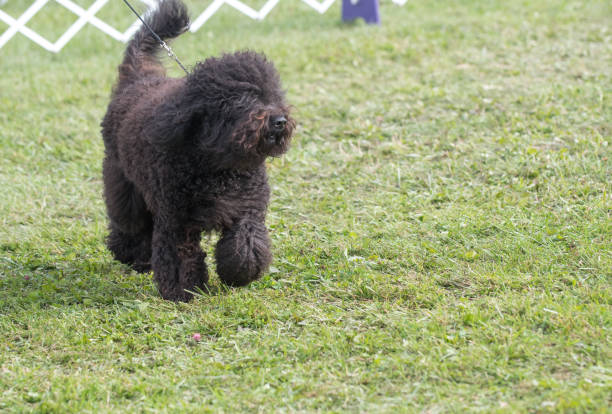French Water Dog (Barbet)

Breed History:
The Barbet, also known as the French Water Dog, is an ancient breed with origins tracing back to France as early as the 16th century. It was developed as a waterfowl retriever, used by hunters to flush and retrieve game from swamps, marshes, and lakes.
Its name comes from the French word barbe, meaning "beard," referencing the breed’s distinctive facial hair. The Barbet is considered the ancestor of several modern water dogs, including the Poodle and Portuguese Water Dog. Although it nearly disappeared during the World Wars, dedicated breeders revived the Barbet, preserving its friendly temperament and strong swimming ability.
Today, the breed is recognized by the FCI and various national kennel clubs, gaining popularity as a versatile companion and sporting dog.
|
Gender |
Height |
Weight |
|
Male |
58-65 cm |
18-27 kg |
|
Female |
53-61 cm |
14-23 kg |
Size: Medium
Life Expectancy: 12–15 years

Breed Appearance:
The Barbet has a strong, compact, and well-balanced body with a woolly, curly coat that protects it from cold water and harsh weather. It has a rounded head, broad muzzle, and distinctive beard and moustache.
The coat comes in various colors, including black, brown, fawn, gray, or white, and may be solid or have white markings. Its webbed feet aid in swimming, and its expressive eyes and floppy ears give it a gentle, endearing look.
Breed Type – Sporting/Water Dog:
The Barbet is a sporting breed bred for water retrieval. It is highly intelligent, sociable, and adaptable, making it well-suited for both work and family life.
It excels in hunting, agility, obedience, and water sports, but above all, it thrives as a loyal companion. Known for its gentle, cheerful disposition, the Barbet fits well into active homes and is eager to please.

Training:
Barbets are quick learners and respond well to positive reinforcement. They enjoy training and need mental stimulation to stay sharp. Their sensitive nature means harsh methods should be avoided.
Early socialisation and consistent guidance are important to build confidence. They tend to do well in obedience and agility sports and are especially motivated when training is made fun and engaging.
Health & Care:
The Barbet is generally healthy but may be prone to:
-
Hip dysplasia
-
Progressive retinal atrophy (PRA)
-
Epilepsy
-
Ear infections (due to hairy, floppy ears)
Responsible breeders test for these conditions. Regular vet visits, a balanced diet, and maintaining a healthy weight are essential. Keep ears dry and clean, especially after swimming, to prevent infections.

Living Conditions:
The Barbet adapts well to both rural and suburban environments, and even to apartment living, provided it gets adequate exercise. It enjoys being part of the family and does poorly if isolated for long periods.
This breed is good with children and other pets, making it an excellent choice for active families. It needs daily companionship and mental stimulation to stay happy and well-behaved.
Exercise:
The Barbet requires regular daily exercise, including walks, play sessions, and opportunities to swim if available. They enjoy retrieving, hiking, and canine sports.
While not hyperactive, they are energetic and playful, and need both physical and mental outlets. Without enough stimulation, they can become bored and destructive.
Grooming:
The Barbet’s coat needs regular grooming to avoid matting:
-
Brush thoroughly 2–3 times a week
-
Professional grooming every 6–8 weeks
-
Trim around the eyes and paws to maintain comfort
-
Clean ears and dry thoroughly after swimming
-
Regular nail trimming and dental care
The coat is considered hypoallergenic, and the breed is a moderate shedder when maintained properly.

Advantages:
-
Friendly, cheerful, and affectionate with family
-
Versatile and athletic; excels in various canine sports
-
Hypoallergenic coat with low odor
-
Excellent swimmer and water retriever
-
Good with children and other animals
-
Intelligent and eager to learn
-
Adaptable to various living situations
Disadvantages:
-
Requires regular grooming to avoid matting
-
May suffer from separation anxiety if left alone too often
-
Needs regular mental and physical stimulation
-
Can become bored or destructive if under-exercised
-
Sensitive nature may not suit overly loud or chaotic homes
-
Not widely available; may be hard to find a breeder
-
Prone to ear infections due to water-loving behavior

